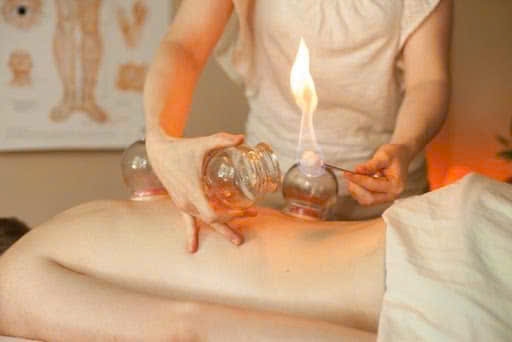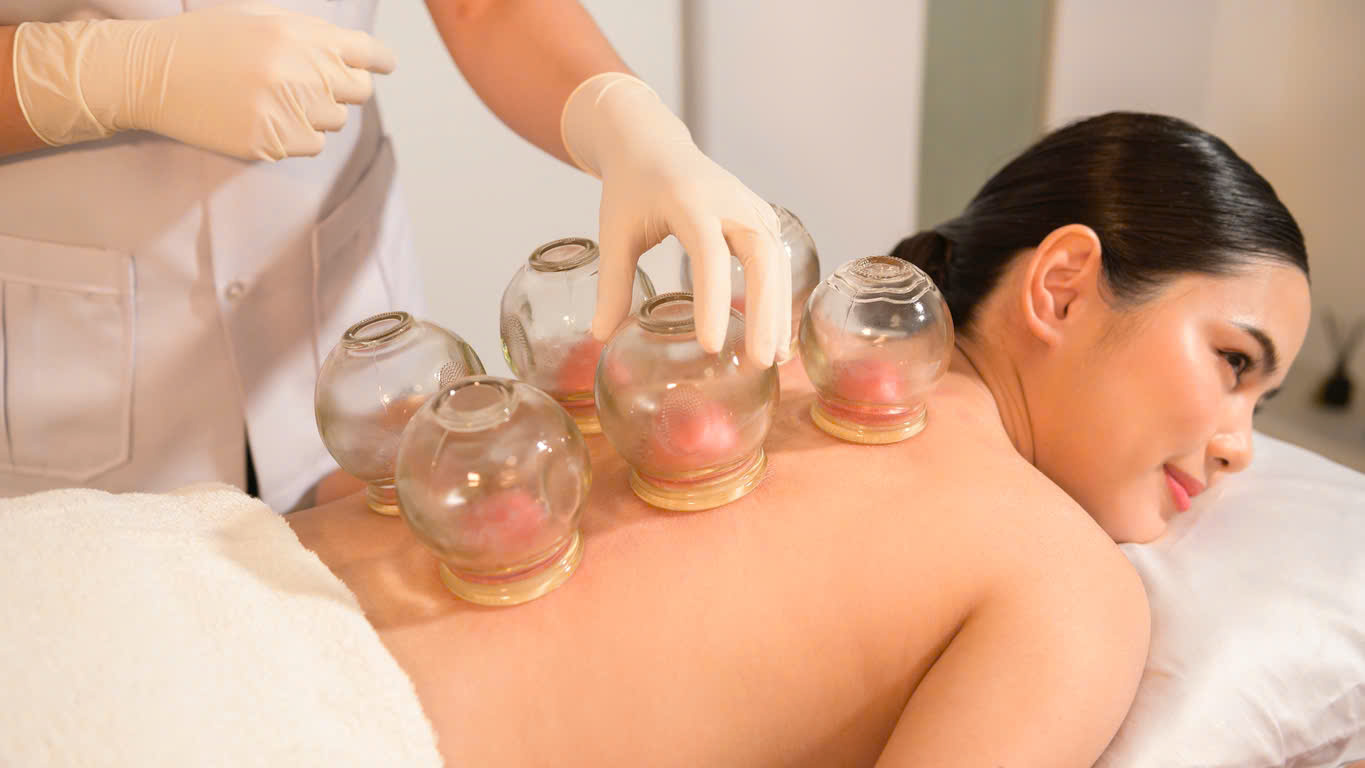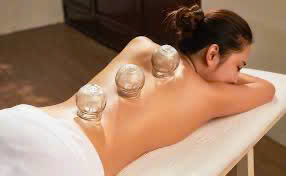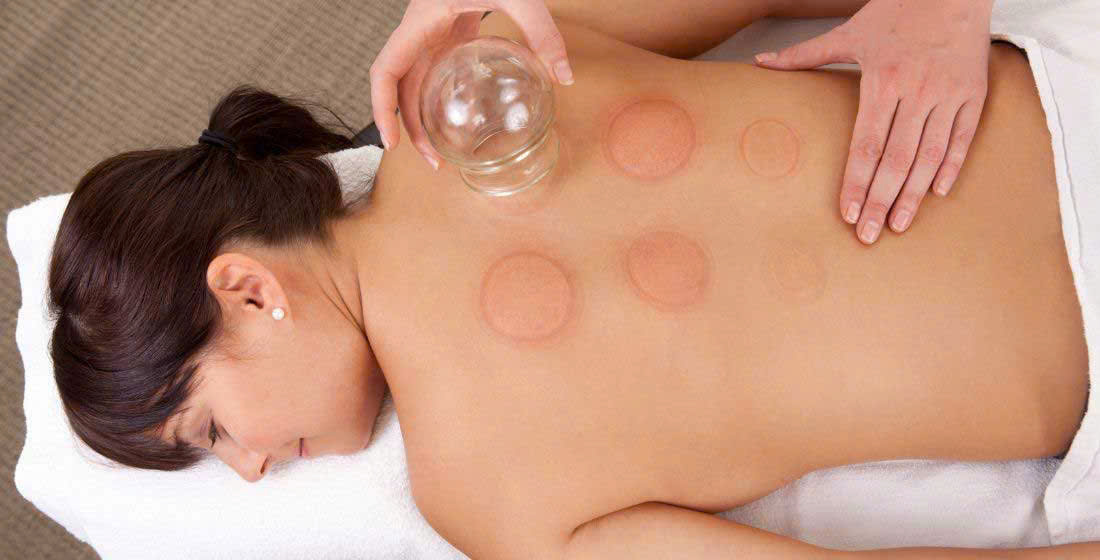Cupping therapy Massage – 3 important Benefits, Types, and Who Can Try It
Cupping therapy massage– has rapidly become a popular holistic method embraced around the world for its wide range of health benefits. Whether seen in traditional healing systems or modern wellness centers, it’s an ancient art that combines the principles of negative pressure and manual manipulation to promote healing at multiple levels. This therapeutic approach has gained traction among athletes, individuals with chronic pain, those seeking detoxification, or simply people wanting to improve their overall well-being. In this comprehensive guide, we’ll explore cupping therapy massage- delve into what is cupping massage therapy treatment exactly, analyze the different types of cupping therapy massage, uncover the numerous benefits fo cupping therapy massage , and determine who can try it safely and effectively. If you’re curious about how this fascinating modality might fit into your personal wellness journey, read on for detailed insights, expert analysis, and practical considerations.

Cupping therapy Massage
The practice of cupping therapy massage- therapy treatment bridges ancient traditions and modern therapeutic applications. Before diving into technicalities, it’s essential to appreciate how this age-old remedy has evolved and why it continues to captivate practitioners and clients alike. Unlike conventional massages that rely solely on compressive manipulation, cupping introduces decompression—a unique approach that brings about distinct physiological and psychological effects.
Origins and Historical Context of cupping therapy massage
Cupping therapy massage has roots stretching back thousands of years across diverse cultures including Traditional Chinese Medicine (TCM), ancient Egyptian practices, Middle Eastern healing arts, and even early European folk medicine.
In China, cupping therapy massage was documented as early as 281 AD, known for its ability to balance qi—vital energy—and clear blockages along meridians. Practitioners used animal horns before transitioning to bamboo, glass, and later silicone materials. Meanwhile, ancient Egyptians recorded cupping in the Ebbers Papyrus (around 1550 BCE), emphasizing blood purification and toxin removal. Even Hippocrates recommended cupping in ancient Greece to treat internal disease and structural problems.
What’s truly fascinating is how these diverse civilizations independently recognized the therapeutic value of negative pressure. While their philosophies varied—be it restoring energy flow or improving humoral balance—the fundamental technique remained consistent: applying suction to the skin to facilitate healing. Today’s integration of cupping in physiotherapy and sports medicine reveals both continuity and innovation rooted in these traditions.
cupping therapy massage – Technique Overview and Therapeutic Philosophy
At its core, cupping therapy massage- therapy treatment involves placing cups onto the skin to create localized suction. This suction draws up underlying tissues, increasing blood flow, encouraging lymphatic drainage, loosening fascial restrictions, and stimulating the nervous system.
Unlike deep tissue massage that applies downward force, cupping lifts tissues upward. This difference produces unique outcomes such as reducing stagnation, breaking down adhesions, and promoting natural detox processes. Many practitioners combine cupping with gliding movements—known as moving or massage cupping—to enhance these effects over larger muscle groups.
Therapeutically, cupping aligns with holistic philosophies aiming to restore balance within the body rather than merely suppress symptoms. By facilitating the body’s intrinsic healing abilities, it addresses both physical discomforts and subtle energetic imbalances. This dual perspective—that of physical science and energetic flow—adds depth to its appeal and effectiveness.
Modern Popularity and Integration in Wellness of cupping therapy massage
The resurgence of interest in cupping therapy massage- therapy treatment owes much to visibility among celebrities, elite athletes, and social media influencers. When Olympic swimmer Michael Phelps showed off his cupping marks during the 2016 Rio Games, it sparked worldwide fascination.
Beyond the hype, contemporary research supports cupping’s potential for pain relief, enhanced circulation, improved recovery, and relaxation. Integrative clinics now often offer cupping alongside acupuncture, chiropractic care, and manual therapies. Its customizable nature—from gentle facial cupping to intense sports recovery sessions—makes it versatile for various needs.
Moreover, modern practitioners blend traditional wisdom with scientific understanding, using anatomical knowledge and safety protocols to maximize benefits while minimizing risks. This synergy between old and new explains why cupping remains relevant in today’s complex healthcare landscape.
By appreciating the rich history, distinctive technique, and evolving role in wellness, one gains a holistic view of cupping therapy massage- therapy treatment —a timeless yet innovative tool for healing and vitality.

What is Cupping therapy Massage Therapy Treatment
Understanding what is cupping therapy massage therapy treatment requires exploring not only the mechanical aspects but also the deeper physiological responses it triggers. Unlike many other manual therapies, cupping uniquely employs negative pressure, resulting in complex changes beneath the skin surface that contribute to its broad therapeutic reach.
The Science Behind Negative Pressure of cupping therapy massage
Fundamentally, cupping works through creating suction on targeted areas of the skin. This negative pressure causes the skin and superficial muscle layer to be drawn gently or vigorously—depending on the intensity—into the cup.
This mechanical action leads to several key physiological responses:
- Increased microcirculation, which enhances nutrient delivery and waste removal.
- Microtrauma, prompting a controlled inflammatory response that stimulates healing.
- Loosening of connective tissue and fascia, improving mobility.
- Activation of the nervous system, inducing relaxation or analgesia.
It’s akin to reverse massage; instead of pressing inward, cupping decompresses tissues outward. This unique stimulus explains many of its reported benefits—reducing muscular tension, promoting faster recovery, and assisting detoxification.
From my analysis, what sets cupping therapy massage- therapy treatment apart is its ability to target problematic areas without excessive force, making it suitable even when deep tissue work might be intolerable.
Different Approaches and Techniques of cupping therapy massage
When exploring what is cupping therapy massage therapy treatment, it’s important to recognize the diversity in techniques employed depending on client needs and practitioner expertise.
Dry cupping involves straightforward application of suction, either stationary or with movement. Wet cupping incorporates minor skin incisions, allowing toxins or stagnated blood to be drawn out—though this is less common in Western settings.
Massage cupping or moving cupping involves sliding the suctioned cups along muscle groups, enhancing lymphatic flow and providing a dynamic stretch to the fascia. Flash cupping uses rapid placement and removal to stimulate the area without prolonged suction.
Practitioners adjust variables like cup size, suction strength, and duration to tailor treatments. I find this customization critical—it allows gentle approaches for sensitive individuals or more intense stimulation for athletes needing deep tissue release.
What unifies these methods is the principle of harnessing negative pressure to mobilize blood, reduce congestion, and stimulate healing. This versatility underscores cupping’s appeal across diverse therapeutic contexts.
Safety, Sensations, and Aftercare when use cupping therapy massage
Addressing what is cupping therapy massage therapy treatment also means discussing user experience and safety considerations.
During a session, sensations vary from mild pulling and warmth to intense tightness, depending on suction strength. Most people describe it as deeply relaxing or satisfying, although initial discomfort may occur when targeting tense or congested areas.
Post-treatment, circular marks ranging from pink to deep purple often appear. These aren’t bruises per se but signify stagnation being released and increased blood flow. They typically fade within days and indicate an effective treatment.
Proper aftercare includes hydration, avoiding hot showers immediately, and resting as needed. While generally safe, cupping isn’t advisable for those with bleeding disorders, certain skin conditions, or uncontrolled medical issues.
My insight is that informed communication and careful assessment are vital to ensure a positive experience. When performed skillfully, cupping therapy massage- therapy treatment provides profound relief with minimal adverse effects.
In summary, understanding what is cupping therapy massage therapy treatment reveals a nuanced interplay of mechanical forces and biological responses, offering a gentle yet powerful pathway toward healing and rejuvenation.

Types of Cupping Massage
Exploring the types of cupping therapy massage illuminates the remarkable adaptability of this therapeutic art. From ancient roots to modern innovations, various cupping methods have emerged to address specific conditions, sensitivities, and preferences. Recognizing these types helps tailor treatments for optimal results.
Dry Cupping: Foundation of the Practice
Dry cupping, often considered the foundational form, involves applying suction without any incision or additional interventions.
This method utilizes glass, plastic, silicone, or bamboo cups placed on selected points or along muscle strands. Suction is created by heat (traditional fire cupping) or mechanical pumps (modern methods). Cups remain stationary for several minutes or are moved gently to cover wider areas.
Dry cupping’s primary effects include drawing stagnant blood to the surface, increasing local circulation, and stimulating the nervous system. As no skin penetration occurs, it’s non-invasive yet highly effective.
One benefit of dry cupping is its suitability for a wide range of individuals, including beginners cautious about more intensive modalities. It offers detoxification, pain relief, and relaxation with minimal risk.
My observation is that dry cupping forms the backbone of cupping therapy, serving as a versatile, accessible entry point adaptable to various concerns—from muscle tightness to energetic imbalances.
Wet Cupping (Hijama): A More Intensive Detox Approach
Wet cupping, also known as Hijama, incorporates controlled skin incisions under the suction cups to draw out small quantities of blood.
Practiced extensively in Middle Eastern and some Asian cultures, wet cupping is revered for its potent cleansing effect, believed to remove “bad” or stagnated blood and toxins more effectively than dry methods.
The procedure starts similarly to dry cupping, followed by superficial skin pricks using a sterile blade. Cups are then reapplied to extract blood. This process is strictly regulated and requires skilled practitioners due to infection risks.
While more invasive, proponents argue it yields dramatic improvements for headaches, chronic pain, hypertension, and inflammation. However, wet cupping is less common in Western clinics due to regulatory and safety concerns.
In my view, wet cupping exemplifies the depth of traditional detox philosophies. When performed correctly, it can complement broader healing plans, though it necessitates meticulous hygiene and professional oversight.
Moving and Facial Cupping: Dynamic and Delicate Applications
Beyond stationary techniques, moving or massage cupping involves sliding cups over lubricated skin after suction is established.
This creates a dynamic negative pressure massage, ideal for large muscle groups like the back, thighs, and shoulders. It promotes lymphatic drainage, breaks down fascial adhesions, and enhances fluid exchange across tissues.
Facial cupping employs smaller, softer cups designed for delicate facial contours. Rather than leaving marks, it gently lifts tissues, increases microcirculation, reduces puffiness, and may stimulate collagen production.
These variations demonstrate cupping’s adaptability—from deep myofascial release to cosmetic enhancement. Clients often find moving cupping soothing and invigorating, combining benefits of traditional massage with decompression.
My creative insight here is that moving and facial cupping illustrate how ancient methods can evolve into refined, specialized tools addressing modern aesthetic and rehabilitative goals.
Overall, the diverse types of cupping therapy massage enable personalized, multi-faceted treatments—whether for detox, pain management, or beauty—anchored in a shared principle yet tailored through technique.

Benefits of Cupping Massage Therapy Treatment
The growing popularity of cupping therapy massage- therapy treatment is largely driven by its extensive and well-documented benefits. This ancient technique boasts profound impacts on physical, mental, and even emotional health. Let’s delve deeply into the evidence-supported and experiential advantages of cupping therapy massage therapy treatment.
Pain Relief and Musculoskeletal Recovery
Perhaps the most celebrated use of cupping lies in alleviating various pain syndromes and accelerating recovery from musculoskeletal injuries.
Negative pressure lifts and decompresses tight muscles and fascia, reducing local ischemia (lack of blood flow) and promoting oxygen-rich circulation. This counters pain-triggering stagnation and inflammation. Numerous studies highlight its efficacy for back pain, neck stiffness, shoulder injuries, and even migraines.
Athletes employ cupping to boost post-training recovery, decrease soreness, and maintain soft tissue flexibility. It breaks down scar tissue, releases trigger points, and supports functional movement.
From personal analysis, the appeal here is twofold: cupping offers a non-pharmaceutical, minimally invasive alternative for chronic pain sufferers, plus a proactive tool for injury prevention and rehabilitation. It empowers individuals to manage discomfort holistically.
Circulation Enhancement and Detoxification
A key mechanism behind many benefits of cupping therapy massage therapy treatment is the marked increase in local blood flow and lymphatic activity.
Suction-induced hyperemia delivers nutrients and immune factors while flushing out metabolic waste products. This “flushing” effect supports organ detoxification indirectly, revitalizes tired tissues, and can improve complexion and skin tone.
Additionally, cupping stimulates the parasympathetic nervous system, promoting relaxation that aids digestion and systemic detox pathways.
My insight is that while detox claims should be viewed critically, cupping undeniably facilitates better fluid dynamics, which underpins its revitalizing power. It acts as a circulatory reset button, especially beneficial for sedentary lifestyles.
Psychological Well-Being and Stress Reduction
Beyond physical effects, cupping therapy massage- therapy treatment fosters notable mental health benefits. The soothing pull and rhythmic movements induce a meditative state, lowering cortisol levels and calming the mind.
Clients frequently report heightened relaxation, reduced anxiety, better sleep, and improved mood post-session. This is partly physiological—via vagus nerve stimulation—and partly due to the nurturing, ritualistic nature of the therapy.
In our stress-saturated society, such holistic relaxation is invaluable. My analysis suggests cupping serves as a gateway to mindfulness, reconnecting clients with their bodies and fostering mental resilience.
These overlapping benefits—for pain, circulation, and stress—explain why so many integrate cupping into wellness routines. It addresses root causes rather than just symptoms, promoting multifaceted healing.
Whether used alone or alongside other therapies, the benefits of cupping therapy massage make it a compelling choice for those seeking natural, comprehensive self-care.
Who Can Try It
Having explored how cupping therapy massage- works and its manifold benefits, the question arises: who can try it safely and successfully? This section offers a detailed look at suitable candidates, necessary precautions, and how to optimize your first cupping experience.
Ideal Candidates: From Athletes to Chronic Pain Sufferers
Cupping’s versatility suits a broad spectrum of individuals. Athletes commonly use it for performance recovery, muscle maintenance, and injury prevention. The decompressive effect supports tissue repair without adding stress.
Chronic pain patients—including those with fibromyalgia, arthritis, or migraines—find relief via improved circulation and reduced muscle tightness. Those dealing with repetitive strain injuries or postural imbalances also benefit significantly.
Additionally, individuals seeking detoxification, immune support, or relaxation integrate cupping into wellness routines. Even cosmetic clients utilize facial cupping for anti-aging and skin revitalization.
In my experience, cupping appeals because it’s adaptable: intensities and techniques can be customized to meet diverse health objectives, making it accessible to many demographics.
Contraindications and Safety Considerations
Despite its broad applicability, certain conditions warrant caution or complete avoidance.
People with bleeding disorders, anticoagulant use, severe skin conditions (eczema, psoriasis flare-ups), open wounds, or active infections should avoid cupping therapy. Pregnant women must consult healthcare providers, as some points may trigger uterine contractions.
Individuals with cardiovascular concerns or fragile skin require adjusted techniques. Wet cupping carries higher risk due to incisions, thus demanding sterile environments and trained professionals.
Transparency is crucial—disclose medical history upfront to your therapist. Well-trained practitioners will assess suitability and modify protocols accordingly.
My insight emphasizes responsible practice: when contraindications are respected and protocols are adhered to, cupping remains an extremely safe modality with minimal side effects.
Preparing For and Maximizing Your Session
Before trying cupping therapy massage- therapy treatment, hydrate well and avoid heavy meals or alcohol. Wear loose clothing and arrive relaxed.
During treatment, communicate openly about sensations—tension shouldn’t escalate into pain. Post-session, expect discoloration and possible soreness akin to deep tissue work. Rest, stay hydrated, and support detox pathways (e.g., light exercise, sauna).
For best results, schedule a series of sessions to build cumulative benefits. Combining cupping with acupuncture, massage, or stretching often amplifies outcomes.
Ultimately, who can try it includes most adults seeking holistic wellness enhancements. With proper guidance, this ancient therapy offers a powerful yet gentle path to healing and vitality.
Conclusion
Cupping therapy massage- therapy treatment stands as a remarkable fusion of ancient healing wisdom and modern therapeutic application. Understanding what is cupping therapy massage therapy treatment reveals its unique foundation in negative pressure—a method that stimulates blood flow, eases pain, fosters detoxification, and nurtures psychological well-being. The diverse types of cupping therapy massage, from dry and wet to moving and facial techniques, allow unparalleled customization suited to individual needs. see the spa location https://maps.app.goo.gl/2gfYPJNYythhZesU6?g_st=com.google.maps.preview.copy
The wealth of benefits fo cupping massage therapy treatment spans pain relief, enhanced circulation, detoxification, and mental relaxation, making it a versatile addition to integrative health routines. Importantly, knowing who can try it ensures safe and effective experiences, broadening accessibility while respecting necessary precautions.https://jobedubaispa.com/jacuzzi-massage/
In an age where holistic self-care is increasingly valued, cupping offers a time-honored yet innovative pathway to balance and vitality. Embracing this therapy—whether for recovery, relaxation, or rejuvenation—reminds us of the body’s innate capacity to heal when provided with mindful, skillful support. By integrating cupping massage- therapy treatment into your wellness journey, you tap into a tradition refined over millennia, now more accessible and adaptable than ever. https://www.instagram.com/spa.jobe?igsh=cjBmNXo3aXBicHo1
